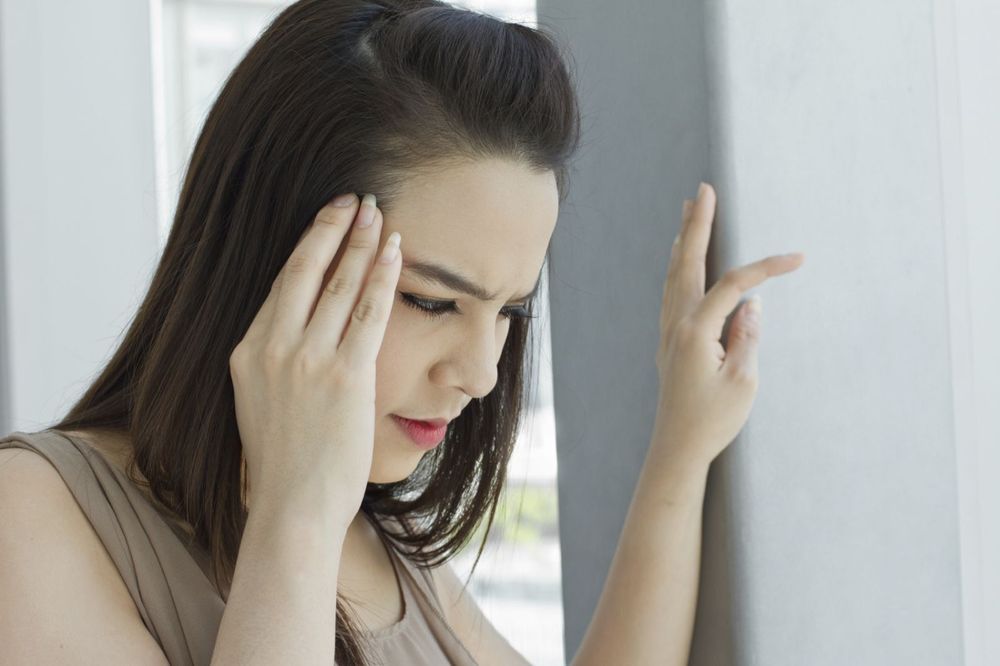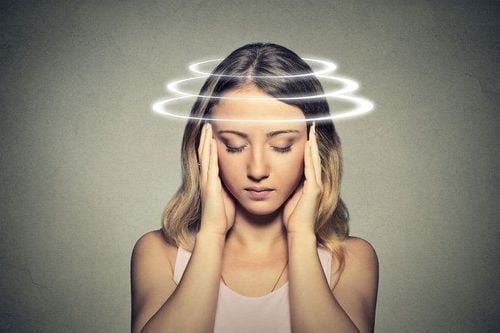This is an automatically translated article.
Benign positional vertigo (BPPV) is diagnosed based on the doctor's judgment and confirmed with laboratory tests. The disease may resolve on its own within weeks to months or can be treated with canalith repositioning and surgery.1. What is benign postural vertigo (BPPV)?
Benign positional vertigo (BPPV) causes mild to severe episodes of dizziness caused by changes in specific locations in the brain, mainly when you raise or lower your head, lie down, when turning over or sitting up in bed.Although benign postural vertigo causes a lot of discomfort, it is rarely serious unless the person is at high risk for falls. When dangerous symptoms appear, you should see a doctor for effective treatment.
2. Causes of benign postural vertigo BPPV
Most BPPV is idiopathic. Identified BPPV is usually associated with forceful impacts to the head. Less common causes include disorders that damage the inner ear, damage that occurs during ear surgery, and prolonged periods of back rest such as sitting in a dental chair for long periods of time. BPPV is also associated with migraines.
Đa số bệnh chóng mặt tư thế lành tính là vô căn
3. Symptoms of benign postural vertigo BPPV
Signs and symptoms of benign positional vertigo (BPPV) may include:Dizziness Feeling that everything around you is spinning or moving Loss of balance or unsteadiness Nausea Vomiting Symptoms of BPPV are often only transient, lasting less than a minute. Episodes of dizziness have a Japanese character, disappear and then recur again. In each person, benign postural vertigo is caused by different activities. Most feel unbalanced when standing or walking.
Abnormal eye movements (nystagmus) often accompanied by symptoms of benign paroxysmal vertigo (sudden and rapidly ending)
4. Diagnosis of benign positional vertigo BPPV

Khi có những dấu hiệu trên bạn không nên chủ quan, thay vào đó nên lựa chọn cơ sở y tế uy tín để thăm khám
Dizziness signs and symptoms confirmed by performing eye or head movements and then decrease in less than a minute Dizziness with specific eye movements occurs when you lie on your back, head turned to one side and slightly tilted over the edge of the examination bed Uncontrollable movements of the eyes from side to side (nystagmus) Inability to control eye movements 4.2 Testing If the cause of your signs and symptoms is difficult to determine, your doctor may order additional testing, such as such as:
Electronystagmography (ENG) or videonystagmography (VNG): The purpose of these tests is to detect abnormal eye movements. ENG (using electrodes) or VNG (using a small camera) helps determine if dizziness is caused by inner ear disease by measuring involuntary eye movements when the head is placed in different positions, or affects some organs by water or air. Magnetic resonance imaging (MRI): This test uses a magnetic field and radio waves to create cross-sectional images of the head and body. Your doctor can use these images to identify and diagnose a variety of signs of disease. An MRI may be used to rule out other causes of dizziness.
5. Treatment of benign postural vertigo BPPV
Benign positional vertigo may resolve on its own within a few weeks or months. However, to ease BPPV symptoms earlier, an audiologist or a rehabilitation physician can perform treatments with repositioning of the canal orifices.5.1 Canalith Repositioning The Canalith repositioning procedure involves a number of simple and slow locomotor maneuvers to reposition the head. The goal is to move small canalith stones (also called otoconia) from the fluid-filled semicircular canal of the inner ear into the vestibule, where the particles are no longer a trigger for vertigo.
Each motion position is held for about 30 seconds. When there are any symptoms or abnormal eye movements stop. This treatment is usually effective after 1-2 treatments. You can also be taught by your doctor about a canalith repositioning procedure to do on your own at home as needed.
5.2 Replacement surgery In very rare situations where root canal repositioning is not effective, your doctor may recommend surgery in which a bony plug is used to block the part of the inner ear that is causing the dizziness. . The plug prevents the semicircular canal in the ear from reacting to the movements of the canalith or general head movements. The success rate for root canal surgery is about 90%.

Tỷ lệ thành công cho phẫu thuật cắm ống tủy là khoảng 90%
6. Home Remedies for Benign Postural Vertigo BPPV
If you have dizziness associated with benign postural vertigo (BPPV), heed these tips:Be aware of potential loss of balance, which can lead to falls and serious injury. Sit down immediately when you feel dizzy. Use good lighting if you wake up at night. Walk with a cane for stability if you are at risk of falling. Work closely with your doctor to manage symptoms effectively. BPPV can recur even after successful treatment. Although there is no cure, BPPV can still be controlled with physical therapy and home treatment.
Vinmec International General Hospital is one of the hospitals that not only ensures professional quality with a team of leading medical doctors, modern equipment and technology, but also stands out for its examination and consultation services. comprehensive and professional medical consultation and treatment; civilized, polite, safe and maximum sterilization space
Customers can directly go to Vinmec Health System nationwide to visit or book an appointment online HERE for support.
MORE:
What is vestibular dysfunction? Dizziness, nausea, headache, fatigue: What you need to know Or right-sided migraine, which specialist should you see?













